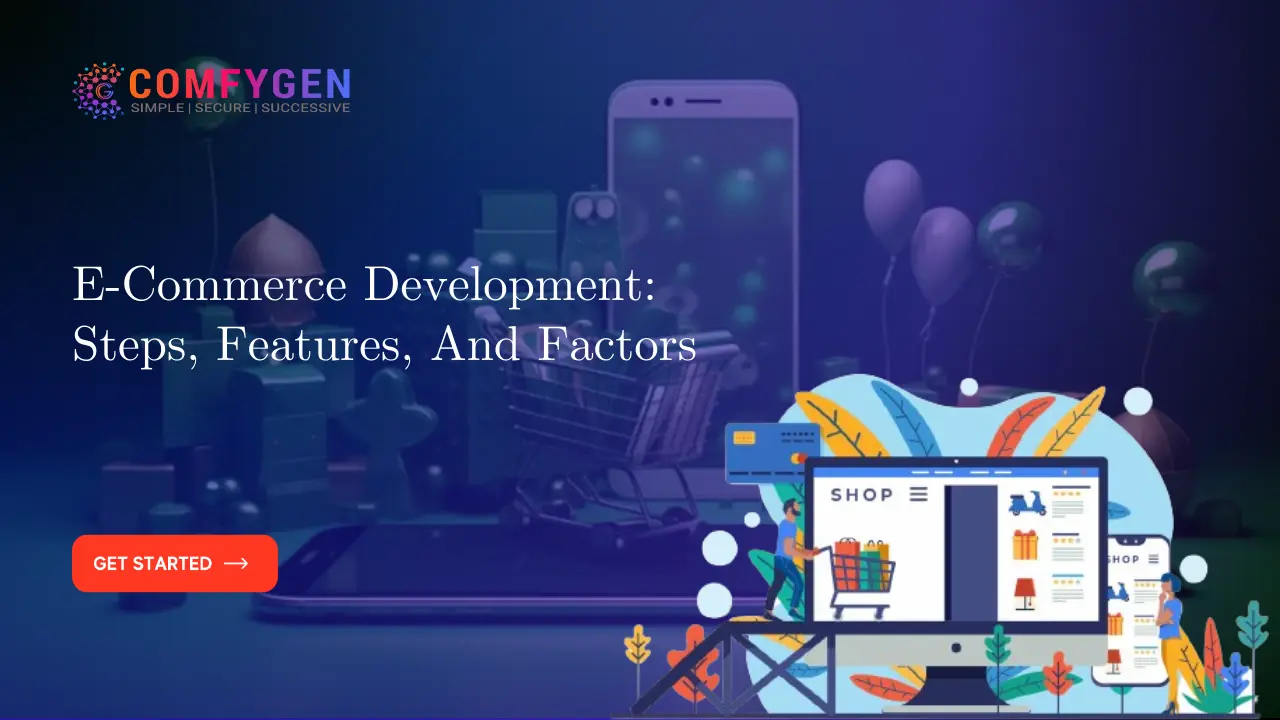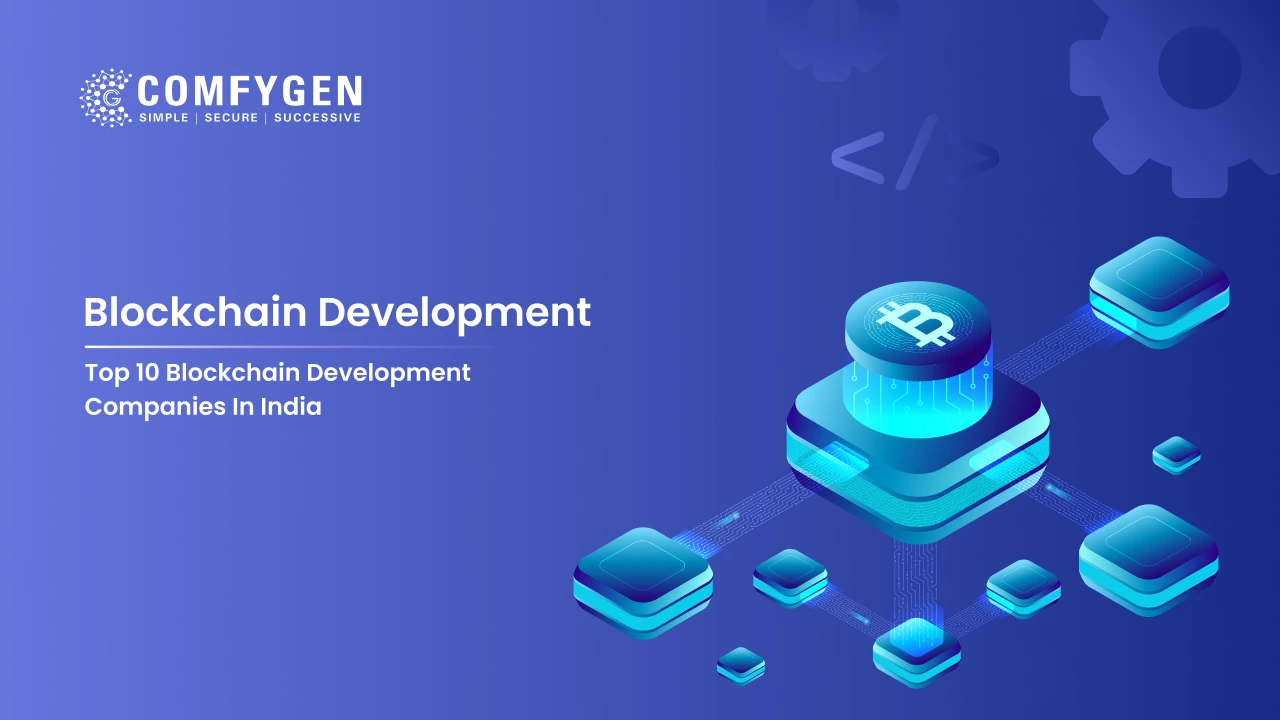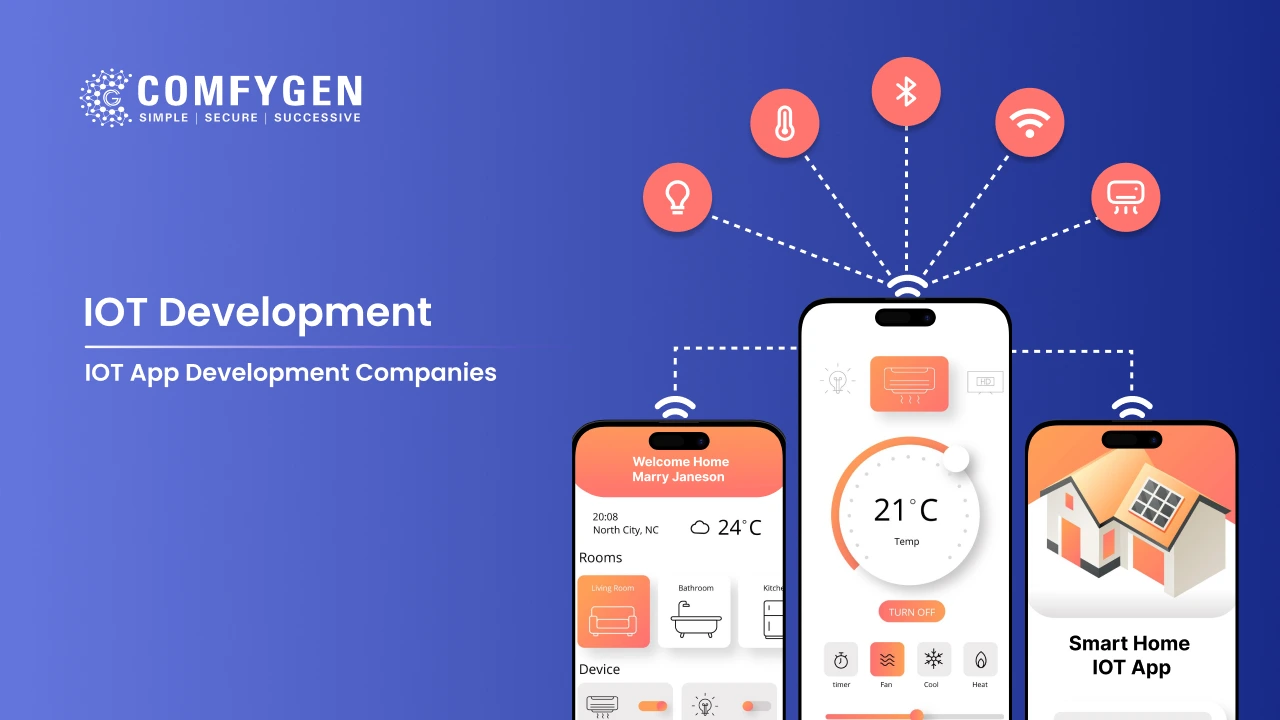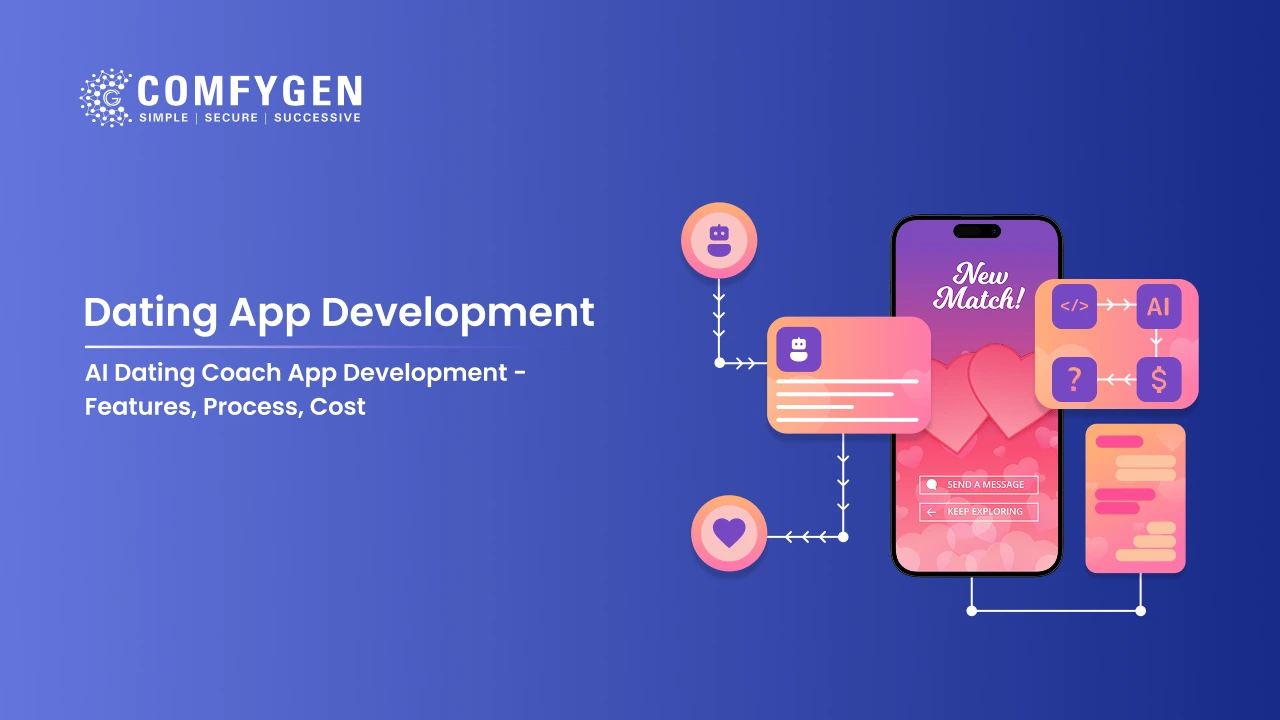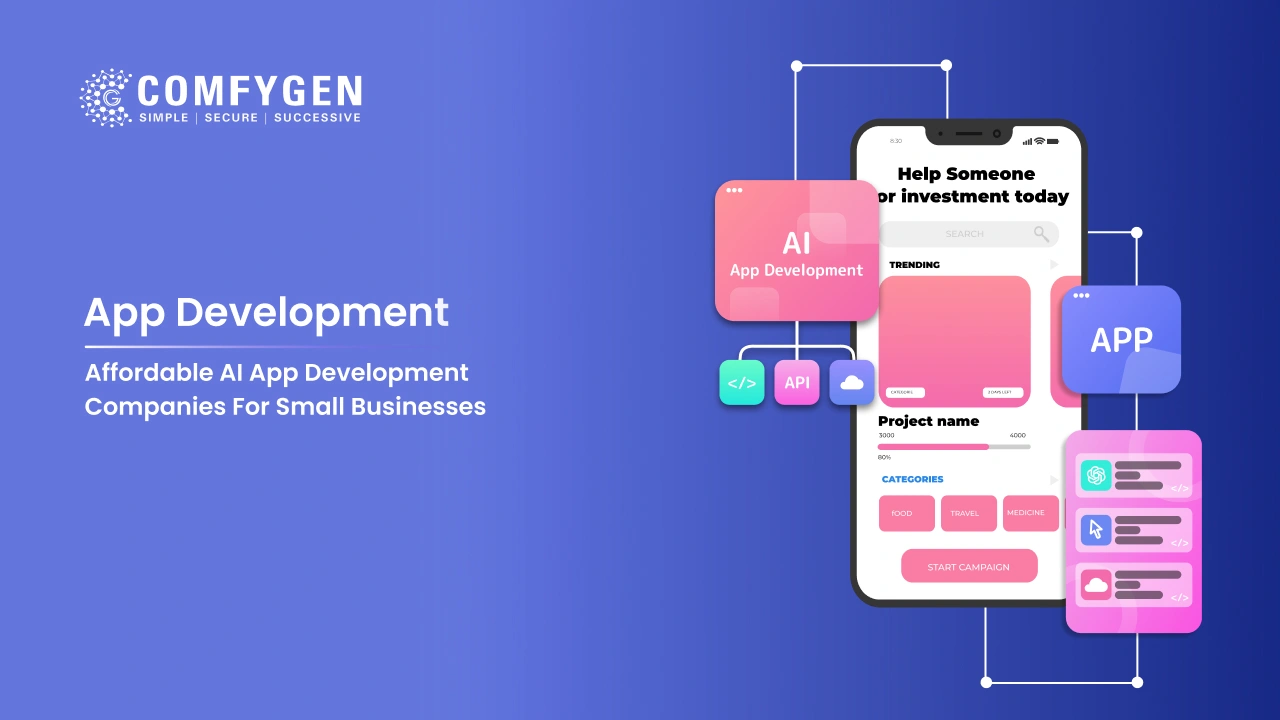Ecommerce Website Development Complete Guide (2025)
The world of online shopping is expanding faster than ever. Businesses of all sizes are moving online to meet consumer demands, making Ecommerce Website Development a critical investment. A well-designed e-commerce website not only attracts customers but also drives sales, builds trust, and positions your brand for long-term growth. This guide explores every aspect of e-commerce website development in 2025, from features to costs, technologies, and future trends.
What is Ecommerce Website Development?
E-commerce website development is the process of creating an online platform where businesses can sell products or services. This involves combining design, development, and functionality to build a secure, user-friendly, and scalable website. Modern e-commerce websites enable features like product listings, shopping carts, payment processing, order management, and customer support.
Why Ecommerce Websites are Essential in 2025
With more consumers shopping online than ever before, businesses without an e-commerce presence risk losing market share. In 2025, e-commerce websites are essential because they:
-
Offer 24/7 accessibility to customers globally
-
Provide personalized shopping experiences
-
Reduce operational costs compared to physical stores
-
Generate data-driven insights for smarter business decisions
Growth and Future Trends of E-commerce Industry
E-commerce is projected to grow exponentially, driven by technologies like AI, AR/VR, voice commerce, and blockchain-based payments. Consumers now expect fast, secure, and intuitive online shopping experiences, making professional Ecommerce website development crucial.
Understanding E-commerce Website Development
E-commerce website development involves creating an online platform where businesses can showcase products, accept orders, and manage transactions.
Key Components of an E-commerce Website
A successful ecommerce website must integrate multiple components to ensure smooth operations and a positive user experience:
-
Product Catalog: Showcases products with detailed descriptions, high-quality images, pricing, and availability. An organized catalog enhances discoverability and encourages purchases.
-
Shopping Cart: Allows users to select multiple products, review their order, and proceed to checkout. A seamless shopping cart experience reduces cart abandonment rates.
-
Payment Gateway: Provides secure online payment options, including credit/debit cards, digital wallets, and net banking. Integration of reliable payment gateways ensures trust and safety for customers.
-
User Accounts: Enables customers to create profiles, manage orders, save preferences, and track purchase history. Personalized accounts improve customer engagement and loyalty.
-
Admin Dashboard: A robust backend system allows administrators to manage products, monitor inventory, process orders, track sales analytics, and generate reports efficiently.
Types of E-commerce Websites
Understanding the different types of e-commerce websites helps businesses choose the best model for their operations:
-
B2B (Business-to-Business): These platforms cater to businesses selling products or services to other businesses. B2B websites often include bulk order options, specialized pricing, and account management features.
-
B2C (Business-to-Consumer): The most common model, where businesses sell directly to individual consumers. B2C websites focus on attractive product displays, seamless checkout, and personalized shopping experiences.
-
C2C (Consumer-to-Consumer): Platforms like eBay and Etsy allow consumers to sell products to other consumers. C2C websites require features such as secure transactions, rating systems, and seller dashboards.
-
C2B (Consumer-to-Business): Users provide products or services to businesses, such as freelance marketplaces or influencer platforms. C2B websites emphasize contract management, proposal submission, and secure payment processing.
Difference Between E-commerce Website and App
Many businesses wonder whether they should invest in an e-commerce website, a mobile app, or both. While mobile apps enhance engagement and provide personalized push notifications, e-commerce websites remain the backbone of online sales for several reasons:
-
Accessibility: Websites are accessible across devices without the need to download an app.
-
SEO Benefits: E-commerce websites can rank on search engines, attracting organic traffic and increasing visibility.
-
Cost-Effectiveness: Developing and maintaining a website is generally more affordable than building and updating a native app.
-
Cross-Platform Reach: Websites cater to both mobile and desktop users, offering a wider audience reach.
Benefits of Having an E-commerce Website in 2025
Investing in professional Ecommerce Website Development offers businesses numerous advantages in 2025. A well-optimized e-commerce website not only enhances customer experience but also drives growth, improves efficiency, and expands market reach. Here are the key benefits of having an e-commerce website:
24/7 Online Business Presence
One of the most significant advantages of e-commerce website development is that your store is accessible to customers around the clock. Unlike physical stores limited by operating hours, an online store allows shoppers to browse, compare, and make purchases at any time.
This continuous availability increases sales opportunities and ensures that businesses never miss potential revenue, even outside traditional business hours.
Global Market Reach
A professionally developed e-commerce website removes geographical barriers, enabling businesses to reach customers worldwide. Through strategic SEO, digital marketing, and localized content, companies can target international audiences efficiently.
Ecommerce Website Development ensures your platform is optimized for global accessibility, responsive design, and multi-currency support, helping you expand your business beyond local boundaries.
Cost-Effective Marketing
Compared to traditional marketing methods, digital marketing through a well-built e-commerce website is highly cost-effective. Features like email campaigns, social media integration, content marketing, and SEO allow businesses to reach the right audience with measurable results.
Investing in Ecommerce Website Development ensures your site is structured to support marketing strategies, track user behavior, and generate better ROI from advertising campaigns.
Enhanced Customer Insights
Modern e-commerce platforms offer built-in analytics and reporting tools that provide valuable insights into customer behavior. Businesses can track website traffic, product performance, purchase patterns, and user engagement metrics.
With professional E-commerce website development, these insights help optimize product offerings, marketing campaigns, and user experience, allowing companies to make data-driven decisions that boost sales and customer satisfaction.
Increased Sales and Scalability
A robust e-commerce website can handle high traffic volumes and large transaction loads, ensuring smooth operations during peak seasons.
Ecommerce Website Development allows businesses to scale their online store easily by adding new products, integrating additional payment methods, and expanding features without significant infrastructure changes.
This scalability enables companies to grow their online presence, increase revenue, and adapt quickly to evolving market trends.
Essential Features of a Successful E-commerce Website
A high-performing e-commerce website is not just visually appealing—it seamlessly blends design, technology, and functionality. Investing in professional eCommerce website development ensures your online store offers a superior user experience while driving sales and customer loyalty.
Here are the essential features every successful e-commerce website should have in 2025:
User-Friendly Navigation
ntuitive and structured navigation is a critical aspect of E-commerce website development services. Clear menus, well-organized product categories, and breadcrumb links allow users to find products quickly.
Whether you are developing a custom e-commerce website for fashion, electronics, or grocery, a smooth navigation system reduces bounce rates and improves conversion rates.
Secure Payment Gateway Integration
Integrating trusted payment gateways like PayPal, Stripe, Razorpay, or industry-specific solutions ensures safe and seamless transactions.
Security is a top concern for users, and professional e-commerce development guarantees compliance with SSL, PCI-DSS, and other regulatory standards. For local businesses, adding region-specific payment methods enhances user convenience and trust.
Advanced Product Search and Filtering
Efficient product search and filtering features enhance the shopping experience. Customers can search by product name, category, price range, or specifications, making it easier to discover exactly what they need.
Leveraging technology-specific solutions like AI-powered search or predictive search enhances relevance and boosts sales.
Mobile Responsiveness
With over 60% of online shopping done via smartphones, a mobile-optimized e-commerce website is no longer optional.
Ecommerce web development companies ensure responsive design across devices, from smartphones to tablets, providing a seamless experience. Mobile responsiveness also improves SEO rankings and overall user satisfaction.
Shopping Cart and Streamlined Checkout System
A smooth shopping cart and checkout process reduces abandoned carts and increases conversions. Features like guest checkout, multiple payment options, and one-page checkout enhance usability.
Integrating industry-specific checkout solutions for fashion, electronics, or grocery businesses ensures tailored functionality that meets customer expectations.
Product Reviews and Ratings
Displaying product reviews and ratings builds credibility and helps customers make informed purchasing decisions.
A review system is especially valuable for B2C and multi-vendor e-commerce websites, where user-generated content influences buyer trust. Integration with social proof tools or verified purchase badges further strengthens reliability.
Order Tracking and Management
Providing real-time order tracking increases customer satisfaction. A robust backend allows businesses to monitor inventory, update order status, and provide notifications automatically.
Local and regional businesses can leverage local & long-tail keywords like “order tracking for e-commerce stores in India” to attract targeted traffic.
Customer Support and Live Chat
Offering instant customer support and live chat improves engagement and reduces post-purchase issues. Modern e-commerce websites integrate AI-powered chatbots or human support to answer queries, assist with product selection, and resolve complaints.
This feature is particularly important for industry-specific e-commerce platforms such as electronics or grocery stores, where product information may require clarification.
Additional Features to Enhance User Experience
Beyond the essentials, businesses can include advanced features:
-
Wishlist & Save for Later: Improves customer retention and repeat visits
-
Personalized Recommendations: AI-powered product suggestions increase cross-selling opportunities
-
Multi-Language & Multi-Currency Support: Helps reach global audiences
-
SEO-Friendly URLs & Structured Data: Improves organic search performance
E-commerce Website Development Process
Building a successful online store requires a strategic approach that combines planning, technology, design, and continuous optimization. The E-commerce website development process ensures your website is secure, scalable, and optimized for user experience and search engines. Below is a detailed, step-by-step guide for businesses planning to launch or upgrade their e-commerce platform in 2025.
Step 1: Market Research and Business Planning
Before starting E-commerce website development, businesses must conduct thorough market research. This involves analyzing target audiences, studying competitors, and identifying niche opportunities. Proper planning helps define product categories, website structure, required features, and budget. By understanding market demand, businesses can create a custom e-commerce website that resonates with users and maximizes sales.
Step 2: Choosing the Right E-commerce Platform
Selecting the right platform is crucial for scalability, functionality, and performance. Popular platforms include:
-
Shopify: Best for small to medium businesses; fast deployment
-
WooCommerce: Flexible and budget-friendly WordPress plugin
-
Magento: Scalable for large enterprises, ideal for complex stores
-
Laravel & Custom Development: Full customization, flexibility, and scalability
-
WordPress: Easy-to-manage, ideal for content-heavy sites
-
Custom E-commerce Solutions: Tailored features for unique business models
Choosing the right platform ensures the foundation for your e-commerce web development services is strong, secure, and easy to manage.
Step 3: UI/UX Design and Wireframing
The design phase focuses on creating an intuitive, visually appealing, and responsive user interface. Wireframes outline the structure of pages, navigation, and product placement. Good design practices include:
-
Minimalist and clean layouts
-
Mobile-friendly and responsive design
-
Clear call-to-action buttons
-
Fast-loading pages and optimized images
A well-designed interface enhances user experience and boosts conversions, making custom e-commerce website development more effective.
Step 4: Backend and Frontend Development
This stage involves technical implementation:
-
Frontend Development: Build the client-facing interface using technologies like React.js, Angular, or Vue.js for a smooth, interactive experience.
-
Backend Development: Use Node.js, PHP, Laravel, or Python to handle database management, server-side logic, and secure transactions.
Step 5: Payment and Shipping Integration
A secure and user-friendly checkout process is essential. Ecommerce Website Development includes integrating multiple payment gateways like PayPal, Stripe, or Razorpay and regional options for local markets.
Shipping solutions must also be integrated, offering real-time tracking, flexible delivery options, and automatic notifications. This ensures a smooth transaction experience for customers.
Step 6: Testing and Quality Assurance
Before launching, the website undergoes rigorous testing:
-
Functionality testing to ensure all features work properly
-
Performance testing for speed and responsiveness
-
Security testing to prevent vulnerabilities
-
Cross-browser and device testing for compatibility
Step 7: Deployment and Launch
Once testing is complete, the website is deployed on a reliable hosting platform. E-commerce website development services ensure SSL certificates, SEO-friendly URLs, and analytics integration are in place. Monitoring performance post-launch helps detect and fix any immediate issues.
Step 8: Post-Launch Support and Maintenance
Continuous support and maintenance are crucial to keep your website running smoothly. This includes:
-
Security updates and patches
-
Adding new features or products
-
Fixing bugs and improving functionality
-
Monitoring site performance and analytics
Technologies Used in E-commerce Website Development
-
Frontend: React.js, Angular, Vue.js for smooth interfaces
-
Backend: Node.js, PHP, Python, Laravel for secure, scalable logic
-
Database Management: MySQL, MongoDB, Firebase for reliable storage
-
Cloud Hosting and CDN Integration: AWS, Google Cloud, Cloudflare for fast load times
-
AI and Chatbot Integration: Enhance personalization and customer support
E-commerce Website Design Best Practices
A well-designed e-commerce website is the foundation of a successful online business. Ecommerce Website Development isn’t just about coding—it’s about creating a user-friendly, visually appealing, and high-performing platform that converts visitors into loyal customers.
Following design best practices ensures your website delivers a seamless shopping experience while boosting search engine rankings. Here are the key design principles to implement in 2025:
Minimalistic and Attractive UI Design
A clean and minimalistic user interface (UI) makes your online store more appealing and easier to navigate. Overcrowded pages or complex layouts can overwhelm visitors, increasing bounce rates.
By focusing on essential elements like product images, clear CTAs (Call to Action), and intuitive navigation, custom e-commerce website development can enhance user engagement and improve conversion rates.
Responsive and Fast-Loading Pages
With the majority of shoppers using mobile devices, mobile responsiveness is no longer optional. A responsive design ensures your e-commerce website adapts to various screen sizes, from smartphones to desktops, providing a consistent and enjoyable user experience.
Page speed is equally critical. Slow-loading pages can frustrate users and negatively impact SEO. Implement e-commerce web development services that optimize images, leverage browser caching, and minimize code to achieve fast-loading pages.
Personalized Shopping Journey
Personalization increases engagement and encourages repeat purchases. Features such as product recommendations, recently viewed items, and personalized offers make the shopping experience more relevant to each customer.
Advanced technology-specific solutions, like AI-powered recommendation engines, allow Ecommerce website development to deliver tailored shopping experiences that boost conversion rates and customer loyalty.
SEO-Friendly Website Structure
A well-structured website helps search engines crawl and index pages effectively, improving visibility in search results. Organize products into logical categories, use clear URLs, and implement schema markup to highlight product information.
During Ecommerce Website Development, integrating SEO-friendly features like meta titles, descriptions, alt texts, and internal linking ensures higher search rankings and increased organic traffic.
Accessibility Compliance for Inclusive Shopping
An inclusive design ensures that your e-commerce website is accessible to all users, including those with disabilities. Features like keyboard navigation, screen reader support, and color contrast optimization improve usability and meet legal accessibility standards.
Implementing accessibility best practices not only expands your customer base but also positively impacts your SEO, as search engines favor websites with good UX.
Cost of E-commerce Website Development in 2025
Investing in Ecommerce Website Development is a crucial step for businesses aiming to establish a strong online presence. Understanding the cost factors involved in building an e-commerce website helps companies plan budgets effectively and choose the right development approach.
The overall cost of developing an e-commerce website in 2025 varies depending on design complexity, technology, features, and location.
Key Cost Factors in E-commerce Website Development
-
Website design and UI/UX complexity
-
Platform selection (Shopify, WooCommerce, Magento, Custom)
-
Number of features and integrations
-
Hosting, security, and maintenance requirements
Average E-commerce Website Development Cost in 2025
-
India: ₹50,000 – ₹5,00,000
-
USA: $5,000 – $50,000
-
UK: £4,000 – £40,000
Explanation:
-
Simple, template-based websites with limited features fall at the lower end of the range.
-
Medium-sized stores with moderate customization, multiple payment options, and responsive design cost mid-range.
-
Enterprise-level platforms with full customization, advanced integrations, and AI-powered functionalities fall at the higher end.
Tips to Optimize Development Cost
-
Start with essential features first and gradually scale with advanced functionalities
-
Use open-source platforms like WooCommerce or Shopify for cost-effective development
-
Choose reliable e-commerce website developers or agencies with experience in e-commerce app development to avoid hidden costs
-
Plan hosting and maintenance packages in advance to ensure predictable expenses
Common Challenges in E-commerce Development
-
Security and Data Privacy: Protect customer data and comply with regulations like GDPR
-
Payment Gateway Issues: Ensure smooth integration and reliable transaction processing
-
Scalability and Performance Optimization: Websites must handle increased traffic during peak times
-
Customer Retention and Engagement: Implement loyalty programs and personalized experiences
-
Managing Returns and Logistics: Efficient backend systems reduce errors and customer complaints
How to Choose the Right E-commerce Website Development Company
Selecting the right partner for E-commerce app development is crucial to building a successful online store. The development company you choose will influence your website’s design, functionality, security, scalability, and ultimately your online business growth. Here’s a detailed guide on what to consider when choosing an e-commerce development company.
Experience and Portfolio
The first step is to evaluate the company’s experience in e-commerce web development services. A reliable company should have a strong portfolio showcasing successful e-commerce projects across industries, platforms, and business sizes.
Reviewing case studies, client testimonials, and live websites helps you understand their design quality, technical expertise, and ability to deliver results.
Technology Expertise
A top e-commerce development company must be proficient in modern technologies and platforms. Whether you need a custom e-commerce website development using Laravel, Node.js, or React, or prefer platforms like Shopify, WooCommerce, or Magento, technical expertise ensures smooth development and seamless integrations.
Development Approach
Choose a e-commerce app development agency that follows a structured, agile, and transparent development process. Agile methodologies allow iterative development, timely feedback, and flexibility to adapt features as the project evolves.
Clear communication, project management tools, and regular updates ensure the project stays on track and meets your expectations.
Pricing and Support Options
Cost is a critical factor, but it shouldn’t compromise quality. Look for a company offering competitive pricing and clear cost breakdowns.
Additionally, post-launch support is essential to maintain your website, implement updates, fix bugs, and ensure security.
Reliable eCommerce website development solution include ongoing maintenance packages tailored to your business needs.
Future Trends in E-commerce Website Development (2025 & Beyond)
The landscape of Ecommerce Website Development is evolving rapidly. As technology advances, businesses need to stay ahead of trends to deliver innovative, secure, and personalized shopping experiences.
Understanding the future of e-commerce development helps companies plan for scalability, adopt new technologies, and enhance user engagement. Here are the top trends shaping e-commerce websites in 2025 and beyond:
AI and Machine Learning
Artificial Intelligence (AI) and Machine Learning (ML) are transforming e-commerce web development services.
AI-powered systems analyze customer behavior to provide personalized product recommendations, predict purchasing patterns, and automate marketing campaigns.
Chatbots powered by AI offer instant customer support, improving engagement and satisfaction.
Benefits:
-
Enhanced customer personalization
-
Increased conversion rates
-
Efficient customer support with chatbots
AR/VR Shopping Experience
Augmented Reality (AR) and Virtual Reality (VR) are revolutionizing how customers interact with products online. From virtual try-ons for fashion and accessories to 3D visualization of furniture, AR/VR technologies bridge the gap between online and in-store experiences.
Benefits:
-
Reduces product return rates by letting customers preview items
-
Creates interactive and immersive shopping experiences
-
Boosts engagement and brand loyalty
Voice Commerce
Voice-activated shopping is gaining traction with smart assistants like Alexa, Google Assistant, and Siri. Voice commerce allows users to search for products, place orders, and track deliveries using voice commands, offering convenience and speed.
Benefits:
-
Provides hands-free shopping experience
-
Optimizes for voice search SEO
-
Enhances accessibility and convenience for users
Blockchain and Crypto Payments
Blockchain technology is becoming increasingly relevant in e-commerce. Integrating crypto wallet and blockchain-based security solutions make sure secure, transparent, and decentralized transactions. This reduces fraud, improves payment efficiency, and builds trust among customers.
Benefits:
-
Enhanced transaction security and transparency
-
Faster and cheaper cross-border payments
-
Attracts crypto-savvy customers
Omnichannel E-commerce Experience
Modern consumers expect a seamless shopping experience across multiple platforms. Omnichannel e-commerce integrates websites, mobile apps, social media channels, and physical stores into a unified system. This ensures consistent branding, inventory synchronization, and smooth customer interactions.
Benefits:
-
Consistent customer experience across channels
-
Real-time inventory and order management
-
Increased customer engagement and retention
Conclusion
Investing in professional Ecommerce development is essential for businesses aiming to succeed in 2025. A well-designed, secure, and user-friendly website improves customer trust, enhances sales, and positions your brand competitively in the digital marketplace.
Key Takeaways:
-
Choose the right platform based on business needs
-
Focus on UX, security, and mobile responsiveness
-
Incorporate SEO and digital marketing for growth
-
Stay updated with emerging technologies like AI, AR/VR, and blockchain
Building a successful e-commerce website requires careful planning, expert development, and continuous optimization. Partnering with a reliable development company ensures your online store is ready to compete in the dynamic world of 2025 e-commerce.

Mr. Saddam Husen, (CTO)
Mr. Saddam Husen, CTO at Comfygen, is a renowned Blockchain expert and IT consultant with extensive experience in blockchain development, crypto wallets, DeFi, ICOs, and smart contracts. Passionate about digital transformation, he helps businesses harness blockchain technology’s potential, driving innovation and enhancing IT infrastructure for global success.
Based on Interest

Create a Crypto Token for Your Business with Blockchain Technology
Blockchain technology evolution is transforming every industry with its secure parameters, transparency, and interoperability. Additionally, the tokenization market is growing from $2-3…

